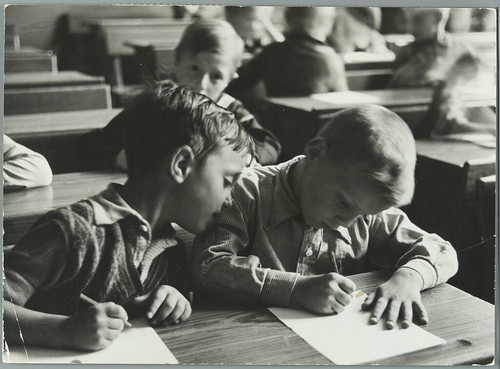I wish I could draw.
I can't. Oh, I'm sure that I could, if only I would pick up a pencil, put it to paper, and practice day after day after day. Except that I don't think that, even with practice, that I would be able to etch out something that looked like anything. I can't draw a person that looks like a person. I can't draw a map that looks like a map. My spatial sense is actually quite good, but I can't express it.
 No, my creative urges are all expressed through words.
No, my creative urges are all expressed through words.
I write for work. I write for publication. I also write for myself. And I have vastly different ways of writing for all three.
When I write for work, I strive for functional. I don't look for turns of phrase or sneak in subtextual snark. Usually, I don't have the time for creativity; I often produce 5,000 words a day or more. I approach my writing for work as an exercise in journalism. I try to get down the Who and the What and the Why. I keep a facsimile of the Kansas City Star's style guide from the early 20th-century, when Ernest Hemingway was a cub reporter, taped up in my cubicle as a kind of inspirational totem.
When I write for myself, I strive for feeling. I call upon the deep recesses of the psyche, the things that I keep locked away because they're too dark or too painful to be reckoned with or revealed. When I tap those deep reserves, however, there's a power that takes even my breath away.
When I write for publication, even when I write for the blog, I fall somewhere in between. I write a little more playfully than I might at work. I also try to write with more meaning. When I write for publication, I want it to connect with the reader. I want the reader to feel, and sometimes I have to dive down into those deep currents and see what treasures I can find there.
I keep a file of ideas. Ideas for stories. Ideas for books. Ideas of no importance whatsoever. Just ideas. Some ideas have been in the file for a long time, waiting for the day I feel the idea and it's ready to grow; either it's germinated, or it's cross-polinated with something else. Ideas are seeds. Writing brings the idea to flower, and it creates a garden.
I feel the most creative in the morning, though in all honesty I do most of my writing in the afternoon and evening. The morning brings the ideas, the afternoon brings the energy, the evening brings the discipline. If only I could bring all three together…
I may not be able to draw with pen and paper, but I can write with pen and paper. Indeed, I love to write with a pen. There is something indescribable about working with a pen. The slowness of handwriting, the subtleties of the muscle movements — these force me to engage with words differently than I do with a keyboard. Typing, the words need only be in the neighborhood, because it is so easy to change them. Handwriting, though, the words need to be right because, while I can scratching them out, changes take time and break the stream of thought. When it's important, or if I need a start or a boost over a mental speedbump, I write by hand.
I do not have the best writing process in the world, but it is a process that works for me.